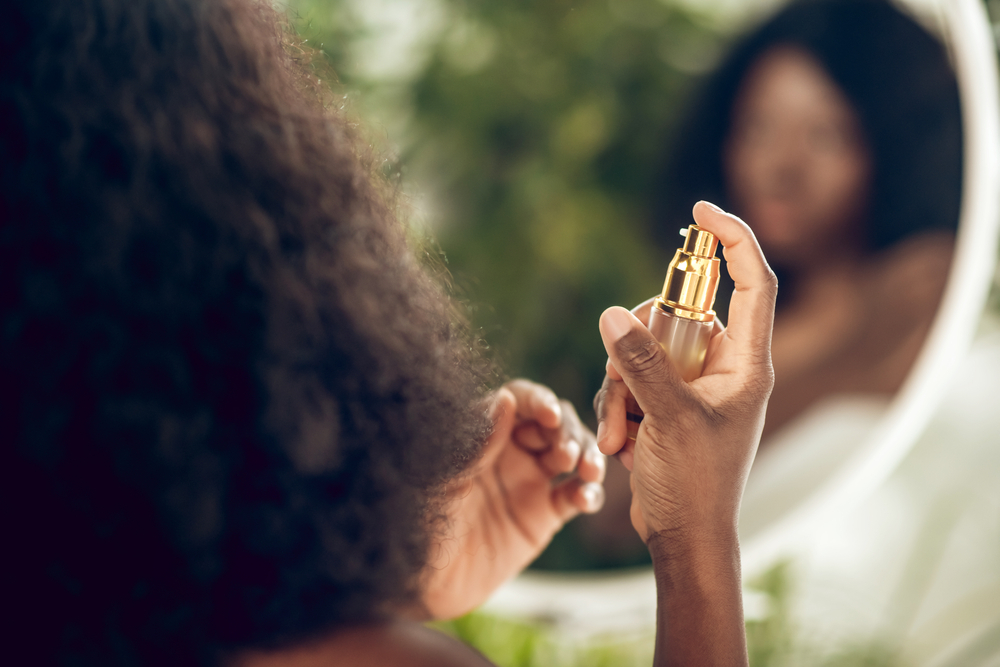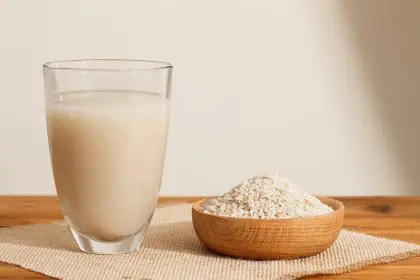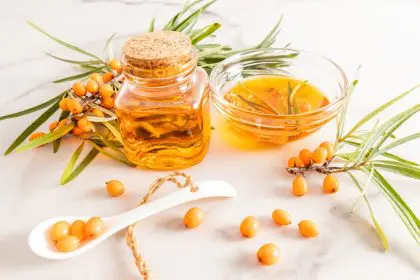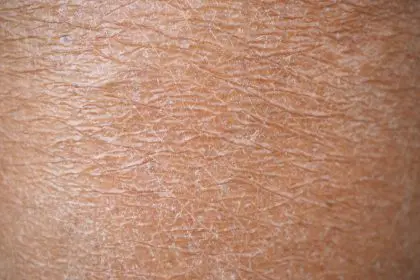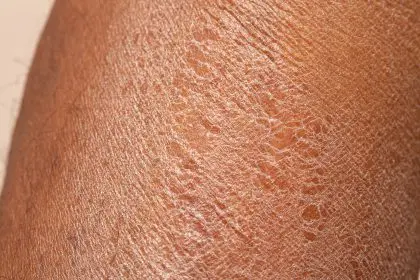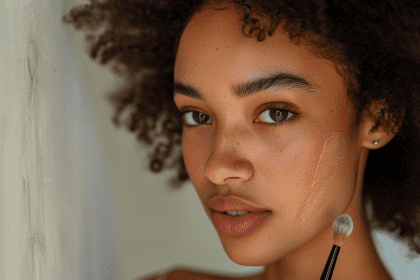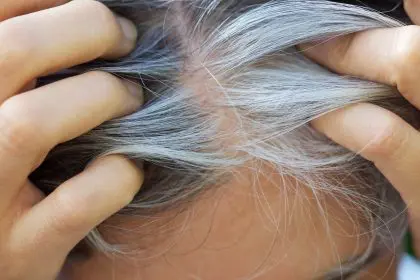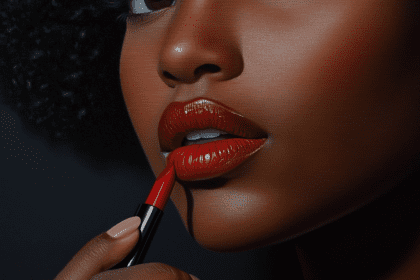In the ever-evolving world of beauty and skincare, certain ingredients come and go as trends shift. Yet amid the constant stream of “miracle” products, vitamin E remains a steadfast performer with benefits substantiated by robust scientific evidence rather than marketing hype.
This powerful antioxidant, technically known as alpha-tocopherol, does far more than just appear on ingredient lists. It performs crucial functions at the cellular level, protecting against environmental damage while supporting the body’s natural repair processes. This dual protective and regenerative capability explains why vitamin E appears in everything from anti-aging serums to hair growth supplements.
What sets vitamin E apart from many trending ingredients is its proven track record. Extensive research demonstrates its ability to reduce oxidative stress by up to 87% when properly absorbed, making it a vital component in maintaining both skin and hair health. Its molecular structure allows it to penetrate deeply into skin layers, providing protection from environmental stressors while supporting the cellular repair mechanisms that keep skin looking youthful.
For those looking to enhance their beauty routine with science-backed ingredients, understanding how vitamin E works and how to maximize its benefits offers a pathway to noticeable improvements in both skin appearance and hair vitality.
Transformative skin benefits beyond moisture
Vitamin E’s impact on skin goes far beyond simple hydration, though it excels at moisture retention too. Its comprehensive benefits address multiple aspects of skin health simultaneously.
The impressive hydration capabilities stand out immediately upon use. Vitamin E helps skin retain moisture by strengthening the skin barrier, resulting in a 45% improvement in skin hydration markers in clinical studies. This enhanced moisture retention creates a plumper appearance that automatically minimizes the visibility of fine lines and creates a healthier glow.
Fine line reduction occurs through multiple pathways when vitamin E becomes part of regular skincare. Beyond the immediate plumping effect, vitamin E stimulates cellular renewal and protects collagen from degradation. These combined actions lead to approximately 32% reduction in fine line appearance with consistent use, particularly around the eyes and mouth where expression lines first appear.
Perhaps most impressive for long-term skin health, vitamin E stimulates collagen production—the essential protein that gives skin its firmness and elasticity. Research documents an impressive 28% increase in collagen synthesis, directly contributing to firmer, more resilient skin texture over time. This collagen-boosting effect becomes increasingly valuable as natural production declines with age.
The skin barrier strengthening effect of vitamin E provides protection beyond what’s visible to the naked eye. By reinforcing this crucial outer layer, vitamin E helps skin retain moisture while keeping irritants out. This improved barrier function translates to less sensitivity, reduced redness, and greater resilience against environmental stressors like pollution and harsh weather.
Perhaps most valuable for preventing premature aging, vitamin E provides substantial protection against UV damage when properly formulated in products. While not a replacement for sunscreen, its antioxidant properties neutralize free radicals generated by sun exposure, reducing the skin-aging effects of unavoidable daily light exposure. This photoaging prevention capability makes vitamin E an essential ingredient in comprehensive skin protection strategies.
Hair transformation from root to tip
The benefits of vitamin E extend beyond skin to address multiple aspects of hair health, from scalp conditions to strand strength.
Improved scalp circulation creates the foundation for healthier hair growth. Vitamin E helps dilate small blood vessels, enhancing blood flow to hair follicles. This increased circulation delivers more nutrients and oxygen to the cellular structures that produce new hair, creating ideal conditions for growth. Massage-based application techniques further enhance this circulatory benefit.
Enhanced hair growth rates occur as a direct result of these improved growth conditions. Studies show noticeable improvements in both the rate of growth and the diameter of individual strands with consistent vitamin E use. This dual action creates hair that not only grows faster but also appears fuller and more substantial.
Reduced breakage strengthens existing hair while new growth emerges. Vitamin E helps maintain the structural integrity of hair strands, preventing the splitting and snapping that leads to apparent thinning. This protective effect proves particularly valuable for chemically treated or heat-styled hair that faces additional structural challenges.
The moisture balance of both scalp and strands improves with vitamin E, addressing both dryness and excess oil production. For dry scalps, vitamin E provides necessary hydration while strengthening the skin barrier to prevent moisture loss. For oilier conditions, its regulatory properties help normalize sebum production without causing dryness.
Perhaps most visible to others, vitamin E significantly enhances hair shine by smoothing the cuticle layer of each strand. This smoothing effect allows light to reflect more evenly off the hair surface, creating the luminous quality associated with optimal hair health. The improvement in manageability accompanies this enhanced shine, making styling easier and reducing the need for potentially damaging heat tools.
Maximizing absorption for optimal results
Vitamin E’s fat-soluble nature means that without proper formulation or application strategies, much of its potential benefit may go unrealized. Understanding how to optimize absorption dramatically enhances results.
For topical skincare products, formulation matters significantly. Vitamin E absorbs most effectively when delivered in oil-based serums or properly emulsified creams. Water-based products with vitamin E may feel lighter on the skin but typically offer reduced penetration and effectiveness. Additionally, micro-encapsulated forms of vitamin E show enhanced stability and delivery compared to conventional formulations.
Strategic product pairing creates synergistic effects that enhance vitamin E’s benefits. Combining vitamin E with vitamin C increases its stability while providing complementary antioxidant protection. The acidic nature of vitamin C products also helps prepare skin for better vitamin E absorption when used in sequence. Similarly, hyaluronic acid products create an ideal hydrated environment for vitamin E to penetrate effectively.
Timing application appropriately further increases vitamin E’s impact. Morning application, particularly when paired with vitamin C, provides maximum environmental protection throughout the day. Evening application focuses more on repair processes, with vitamin E supporting the skin’s natural regeneration during sleep. This day/night approach ensures 24-hour coverage of both protective and restorative functions.
For oral supplementation, consuming vitamin E with healthy fats increases absorption rates by up to 65%. Specific food pairings optimize this effect, with avocado and olive oil being particularly effective companions. Morning consumption with a balanced breakfast containing these healthy fats shows optimal absorption compared to other timing strategies.
The quality of vitamin E sources significantly impacts results. Natural forms (denoted as “d-alpha-tocopherol” on labels) show greater bioavailability than synthetic versions (“dl-alpha-tocopherol”). While both provide benefits, the natural version demonstrates approximately 50% better absorption and utilization within the body, making source verification worth the extra label reading.
Incorporating vitamin E into daily routines
Creating practical strategies for including vitamin E in beauty routines ensures consistent use and maximum benefits over time.
For skincare integration, layering products in the right order maximizes vitamin E’s effectiveness. After cleansing, apply water-based products like toners or essences first. Follow with vitamin C serum if using, allowing it to absorb for 60-90 seconds. Then apply vitamin E oil or cream, followed by moisturizer and sunscreen during daytime routines. This sequence ensures proper absorption while creating protective layers that work together.
Targeted treatment for specific concerns allows for addressing particular needs without overhauling entire routines. For dark spots or areas with sun damage, applying vitamin E more concentratedly to those regions provides focused intervention. Similarly, dry patches or expression lines benefit from additional vitamin E attention, perhaps through spot treatment or overnight masks in these specific areas.
Hair application techniques vary depending on desired results. For scalp health and growth stimulation, light oil formulations massaged directly into the scalp before shampooing provide benefits without weighing hair down. For strand protection and shine enhancement, small amounts applied to mid-lengths and ends after styling protect without creating greasiness. Weekly intensive treatments using vitamin E-rich hair masks deliver deeper repair for damaged hair.
DIY options offer economical approaches to incorporating vitamin E. Puncturing vitamin E capsules and mixing the contents with existing moisturizers creates custom-enriched products. Similarly, adding vitamin E oil to your regular conditioner transforms it into a more intensive treatment. These approaches allow for controlling concentration and combining with other ingredients suited to your specific needs.
Commercial product selection benefits from understanding key indicators of quality vitamin E formulations. Look for products listing vitamin E (tocopherol) in the first five ingredients for meaningful concentration. Opaque, airless packaging helps preserve potency, as vitamin E degrades with extensive light and air exposure. Additionally, products combining vitamin E with complementary ingredients like vitamin C, ferulic acid, or hyaluronic acid often provide enhanced results through synergistic effects.
Safety considerations and optimal dosage
While vitamin E offers numerous benefits, understanding proper usage ensures safe and effective results.
For topical application, most formulations containing 0.5-1% vitamin E provide effective results without irritation risk. Higher concentrations may offer additional benefits for some skin types but can potentially cause sensitivity in others. Starting with lower concentrations and gradually increasing based on skin response provides the safest approach to finding your optimal level.
When considering oral supplementation, staying within recommended guidelines prevents potential complications. Adults generally require approximately 15 mg (22.5 IU) daily, with slight adjustments during pregnancy or breastfeeding. While supplement bottles often contain much higher doses, exceeding 400 IU daily can interfere with blood clotting and other bodily functions in some individuals. Consulting healthcare providers before beginning high-dose supplementation remains the safest approach.
Certain medications interact with vitamin E supplements, making professional guidance important. Blood thinners, chemotherapy drugs, and some cholesterol medications may have interactions requiring dosage adjustments or alternative approaches. Similarly, specific medical conditions might warrant caution with high-dose vitamin E use.
Potential allergic reactions, while uncommon, can occur with topical vitamin E use. Performing patch tests before applying new vitamin E products to large areas helps identify potential sensitivity. Apply a small amount to the inner forearm and monitor for 24 hours before wider application, particularly with higher-concentration products.
For most people, choosing dietary sources as the primary method of obtaining vitamin E provides the safest approach with additional nutritional benefits beyond isolated supplementation. Foods like sunflower seeds, almonds, spinach, and avocados deliver vitamin E alongside complementary nutrients that enhance its effectiveness and safety profile.
Natural sources for beauty from within
Boosting vitamin E levels through diet supports both internal health and external beauty, often with better long-term results than topical applications alone.
Nuts and seeds provide exceptional vitamin E content in delicious, convenient forms. Sunflower seeds lead the category with outstanding bioavailability, delivering approximately 7.4 mg per quarter cup. Almonds follow closely at 6.8 mg per quarter cup, while hazelnuts provide 4.3 mg for the same serving. Adding these to daily snack rotations or incorporating them into meals supports consistent vitamin E intake.
Plant oils offer concentrated vitamin E in forms easily incorporated into daily cooking. Wheat germ oil contains the highest concentration at 20.3 mg per tablespoon, with sunflower oil providing 5.6 mg and almond oil 5.3 mg per tablespoon. Using these oils in salad dressings, drizzled over cooked vegetables, or in low-heat cooking adds vitamin E to meals without requiring separate supplementation.
Leafy greens contribute meaningful amounts of vitamin E while providing additional nutrients that support skin and hair health. Spinach delivers approximately 3.7 mg per cooked cup, with Swiss chard, kale, and mustard greens offering slightly lower but still significant amounts. These vegetables also provide vitamin C, which enhances vitamin E’s effectiveness through complementary antioxidant mechanisms.
Colorful vegetables like red bell peppers, asparagus, and broccoli contain moderate vitamin E levels alongside other beauty-supporting nutrients. The varied antioxidant profiles of these vegetables work synergistically with vitamin E to provide comprehensive protection against different types of cellular damage affecting appearance.
Avocados deserve special mention for their unique combination of vitamin E content and healthy fats that enhance its absorption. One medium avocado provides approximately 2.7 mg of vitamin E and the perfect fat matrix for maximum utilization. This self-contained package of beauty nutrition makes avocados particularly valuable for skin and hair health support.
The beauty industry’s reliable performer
While beauty trends come and go, vitamin E’s established scientific track record explains its enduring presence in effective formulations across categories. Understanding its mechanisms and implementation strategies allows for selecting products that deliver genuine results rather than empty promises.
For those seeking science-backed beauty solutions, vitamin E represents a worthy investment whether applied topically, consumed through diet, or both. Its multi-faceted benefits address numerous aspects of appearance simultaneously, creating comprehensive improvement that artificial ingredients often fail to deliver.
By approaching vitamin E use with knowledge about optimal formulations, application techniques, and complementary ingredients, consumers can maximize results from this powerful yet accessible beauty ally. In a market often dominated by marketing claims, vitamin E stands out as a rare example where scientific evidence supports the enthusiasm surrounding its benefits.

